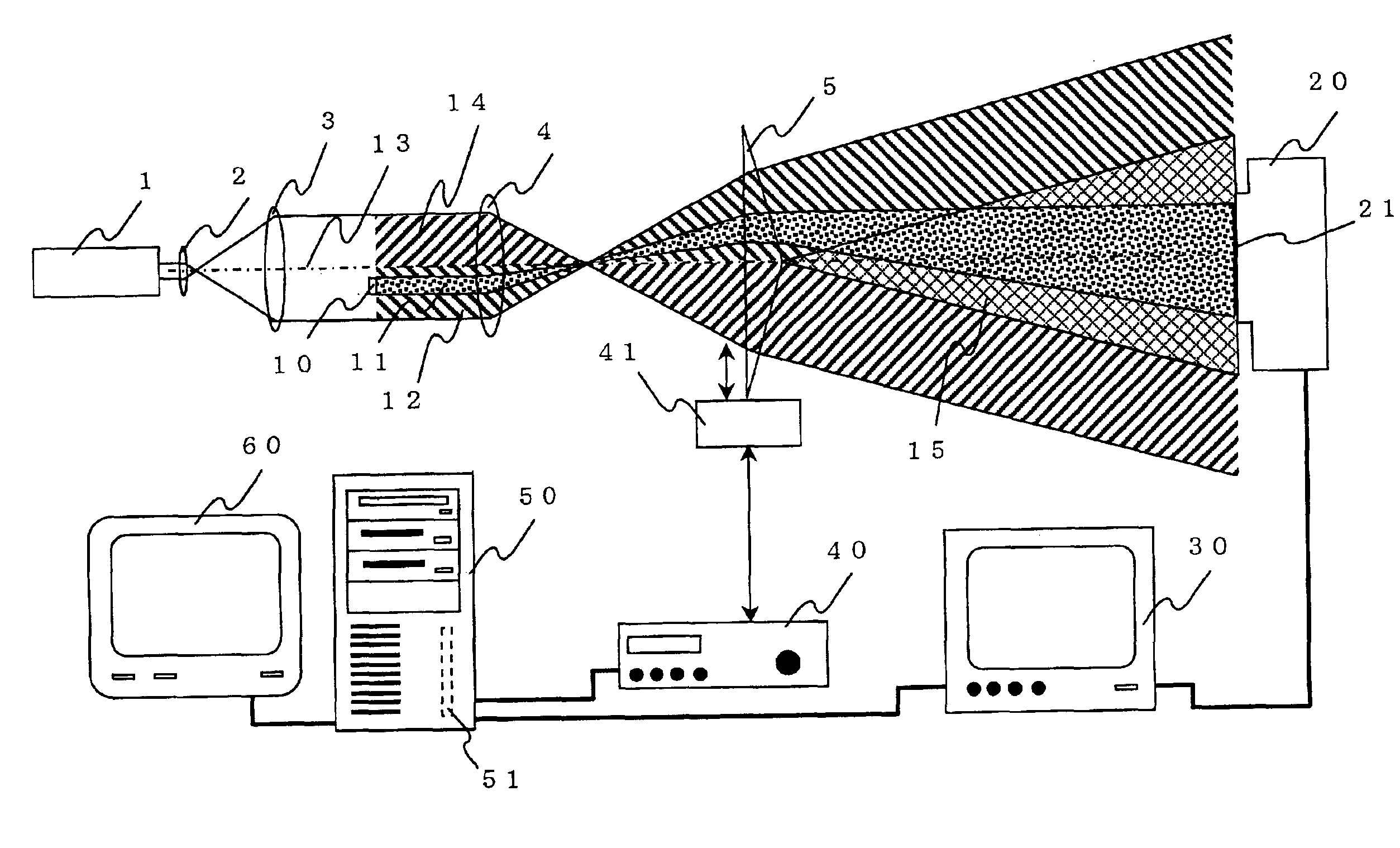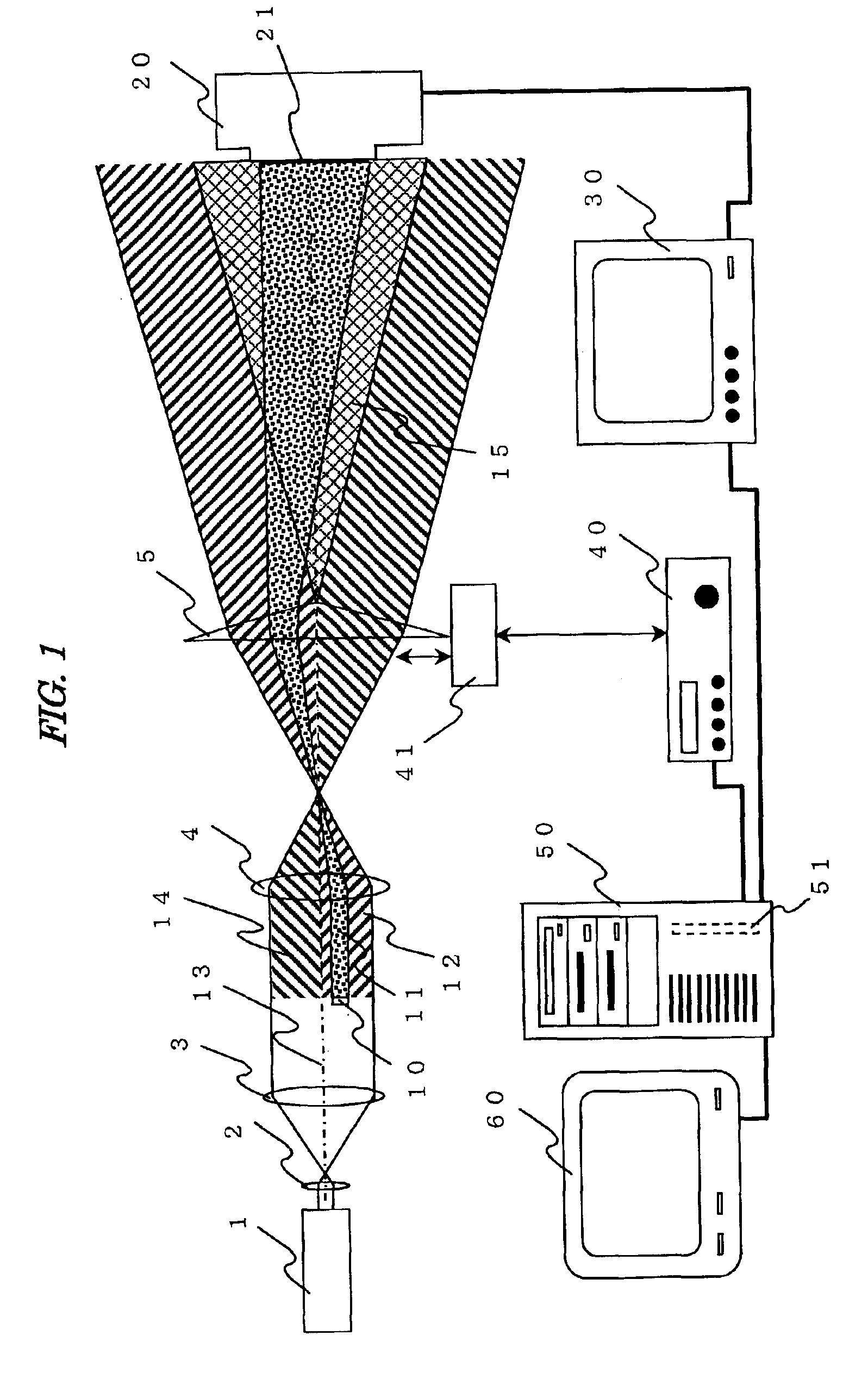Interference measuring device
a measurement device and interference technology, applied in measurement devices, instruments, electric discharge tubes, etc., can solve the problems of large affecting measurement, increasing the size of the optical system, and essentially small measurement error inherent in the interference system, and achieve high precision and obtain high-precision correction effects with eas
- Summary
- Abstract
- Description
- Claims
- Application Information
AI Technical Summary
Benefits of technology
Problems solved by technology
Method used
Image
Examples
embodiment 1
[0059]A first embodiment of the present invention will be described by reference to a fringe scanning laser interference measuring device based on the movement of a biprism shown in FIG. 6. In this embodiment, a biprism 5 which is a wavefront splitting element was used as an interference element, and a beam shielding plate 100 in such a form as to act as a shield against a beam to be irradiated to the wavefront splitting boundary of the biprism was disposed on the sample plane as a means for removing the phase change distribution due to the interference element. The phase distribution of a sample image or a sample-transmitted beam is generally observed at the positive focal point. Herein, the shielding plate 100 was therefore placed on the sample plane equivalent to an observing plane, so that the positive focal point image of a sample was formed directly on the image pickup surface of an image pickup element 20. Herein, there was employed a one-stage magnifying system in which one ...
embodiment ii
[0061]FIG. 7 shows a second embodiment of the present invention. This is so configured that the magnifying lens system of the fringe scanning interference measuring device shown in FIG. 1 has been changed to a two-stage system of an objective lens 4 and a magnifying lens 6 as far as the components shown in this figure concerned. Herein, a reference numeral 25 denotes an intermediate magnified image, and 26 denotes the position at which the intermediate magnified image is formed. A biprism 5, which is a wavefront splitting element, was used as an interference element. A biprism micro-movement mechanism 41 for shifting the relative positional relationship between a sample image and the interference fringes was disposed at an observing plane as a means for removing the phase change distribution due to the interference element. In addition, a calculating device 50 has functions of storing a first interference image, and a second interference image shifted from the first interference ima...
embodiment iii
[0077]On the other hand, the second phase distribution of the expression (6) is shifted by −Δx in the calculating device, and subtracted from the first phase distribution of the expression (5). The resultant value is then normalized by Δx. As a result, it is also possible to directly obtain the form given by differentiating the phase change distribution due to the sample as expressed as the following expression (14): ϕ(x,y)-ϕ(x-Δ x,y)Δ x(14)
[0078]This is basically equivalent to that for the case where the sample 10 has been moved by −Δx in place of moving the biprism 5 of Embodiment 2 by +Δx for forming the second interference image except for the opposite edges along the x direction of the image. Therefore, the sample 10 may also be moved. FIG. 9 shows an embodiment in which the fringe scanning interference method is implemented by micro-moving the sample 10. The configuration of FIG. 9 is different from the configuration of FIG. 6 only in that the micro-movement control mech...
PUM
 Login to View More
Login to View More Abstract
Description
Claims
Application Information
 Login to View More
Login to View More - R&D
- Intellectual Property
- Life Sciences
- Materials
- Tech Scout
- Unparalleled Data Quality
- Higher Quality Content
- 60% Fewer Hallucinations
Browse by: Latest US Patents, China's latest patents, Technical Efficacy Thesaurus, Application Domain, Technology Topic, Popular Technical Reports.
© 2025 PatSnap. All rights reserved.Legal|Privacy policy|Modern Slavery Act Transparency Statement|Sitemap|About US| Contact US: help@patsnap.com



